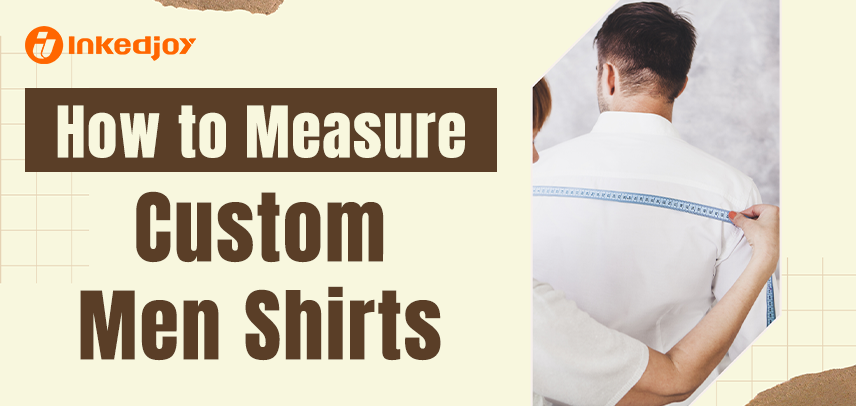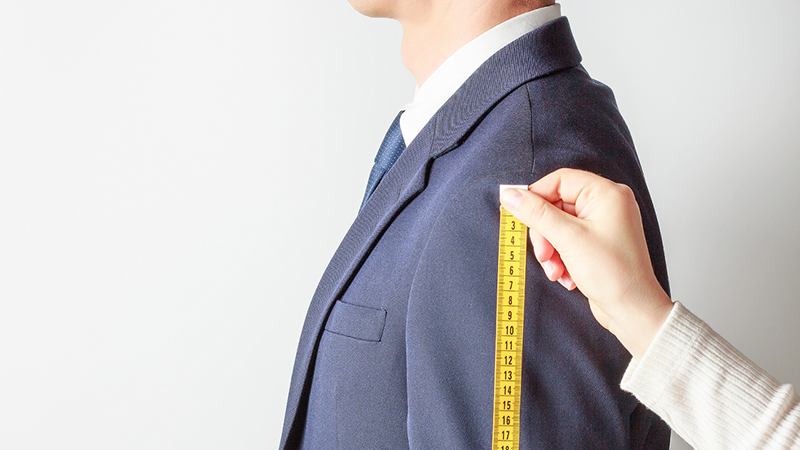
How to Measure for the Perfect Fit in Custom Men's Shirts
To get a custom men's shirt that fits just right, you must start by giving correct measurements. Using the right measuring methods can make the difference between an outfit that looks professional and one that doesn't fit right. Getting accurate measurements is the best way to make sure that the clothes you buy fit well, look good, and are worth the money.
Key Tools for Taking Accurate Measurements
Make sure you have the right tools before you start reading. Instead of metal or stiff rulers, the best measuring tape is one made of cloth that bends around your body. There should be clear writing on the tape, and it should lay flat without sliding or pulling.
You should also ask someone you trust for help. They can put the tape where it needs to be, even if it's hard to see or get to.
Last, make sure you have a notebook and pen handy. When you measure something, write it down so you don't forget and have to do it again.
The Step-by-Step Measuring Guide
Neck Measurement
First, measure your neck. This helps determine your collar size. Wrap the measuring tape around the base of your neck, where a collar would normally sit. The tape should touch your skin but not feel too tight or too loose.
Keep one finger between the tape and your neck. This little bit of space makes sure the collar isn't too tight when you wear it. Stand up straight, relax your shoulders, and look straight ahead while you measure.
Chest and Bust Measurement
Next, measure your chest. Wrap the tape around the fullest part of your chest, usually across your nipples. Make sure the tape is even and doesn't dig into your skin or hang down.
Breathe normally while someone measures. Don't try to puff out your chest or hold your breath. You want to get your chest's natural size as you go about your day.
Waist Measurement
Find your natural waistline. It's above your hip bones and below your ribs. This is different from where your pants usually sit on your hips.
Wrap the tape around this narrowest part of your body. Keep the tape snug but not tight, so you can move and breathe easily. Don't suck in your stomach or push it out while you're being measured.Such precision contributes to a comfortable fit, making the custom shirt a truly useful personalized item rather than just another piece of apparel.
Hip Measurement
The hip measurement is for the fullest part of your lower body, around your hip bones and butt. This measurement affects how a shirt hangs on your lower body and how it fits overall.
Stand with your feet together and wrap the tape around the widest part of your hips. Make sure the tape is level for the most accurate measurement.

Critical Length Measurements
Sleeve Length
To measure sleeve length, pay close attention to how your arm is positioned. Stand with your arms relaxed at your sides, slightly bent at the elbow as you normally would.
Start the measurement at the center of the back of your neck, then follow the line over your shoulder and down your arm to where you want the sleeve to end. For dress shirts, this is usually at your wrist bone. For casual shirts, it might be on your forearm.
Have someone help you with this to make sure it's accurate. They should follow the natural curve of your arm instead of measuring in a straight line.
Shirt Length
Shirt length determines if you'll tuck the shirt in or wear it untucked. For shirts you'll tuck in, measure from the base of your neck down your back to about 8-10 inches below your waist.
For untucked shirts, the length should usually end at your mid-hip or a little below. Think about what you like and how you'll wear the shirt when deciding on the length.
Shoulder Width
The shoulder measurement goes from one shoulder point to the other across your back. Find the points where your arms naturally hang from your body.
Measure straight across your back at this level, keeping the tape even. This measurement really affects how the shirt sits on your shoulders and how it looks overall.
Advanced Fitting Considerations
Body Shape Adjustments
Different body types need different adjustments when measuring. If you're athletic with a broad chest and shoulders, you might need extra room in the chest area while still keeping a fitted waist.
If you have a larger midsection, think about adding more room in the waist while making sure the chest fits well. The goal is to create a flattering shape that works with your natural body.
Posture Impact on Fit
Your posture has a big impact on how a custom shirt fits and looks. Rounded shoulders or a head that leans forward can change how long the sleeves should be and where the collar sits.
When you're being measured, stand how you normally do instead of trying to stand perfectly straight. This way, the shirt will fit comfortably with your natural posture and movements.
Fabric Considerations
Different fabrics act differently when you wear and wash them. Cotton might shrink a little, so you might need to add a bit of extra room when measuring. Stretchy fabrics might not need as much extra space since they move with you.
Think about the fabric you're using when you take measurements and talk to the shirt maker about any concerns. Some fabrics need special measurement adjustments to get the fit you want.
Common Measuring Mistakes to Avoid
Taking measurements over thick clothing skews results significantly. Always measure over thin, fitted clothing or directly against the skin for accuracy.
Rushing through the measuring process leads to inaccurate results. Take time with each measurement, double-checking numbers before moving to the next step.
Measuring while tired or after meals can affect body dimensions. Schedule measuring sessions when feeling comfortable and at a typical daily state.
Failing to record measurements immediately often results in forgotten numbers and repeated measuring sessions. Write down each measurement as soon as it's taken.
Professional vs. Self-Measuring
A professional measure service can help you get more accurate results by using their knowledge and special tools. Tailors and shirt makers know how to adjust the fit of clothes to fit different body shapes.
Self-measuring is still possible, though, with the right tools and help. The key is to carefully follow the thorough instructions and take several measurements to make sure you're right.
If you are getting a custom shirt that costs a lot of money or for an important event, you might want to have a professional check your measures. It can save you a lot of money if you take this extra step.
Start Creating Your Perfect Custom Shirt Today
With accurate measurements and the right approach, creating a great-fitting custom shirt is within reach. Take your time with each step, ask for help if you need it, and don't be afraid to measure again if you're not sure about something. Paying attention to detail when measuring will give you a custom shirt that fits perfectly and makes you look and feel great.



